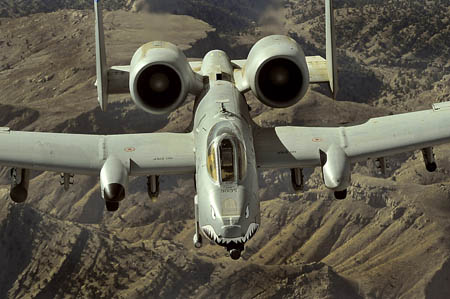 The Air Force may have to eliminate an entire fleet of a particular kind of aircraft—possibly all A-10s or B-1Bs—in order to live within reduced budgets if sequestration persists into Fiscal 2014 and beyond, Chief of Staff Gen. Mark Welsh said June 17. “It’s cheaper to cut fleets than it is to cut a few from a fleet: a lot cheaper,” Welsh said at an AFA-sponsored Air Force breakfast event in Arlington, Va. “So, it’s a way to recapitalize and modernize,” he added. Although Welsh cautioned that “we’re looking at everything” and “there is no coming together on a final decision…yet,” he told reporters that the logic underlying the last big round of aircraft divestitures still holds. The A-10, he said, is a “single mission airplane” and, pressed for cash, the Air Force must hold onto “multi-mission” aircraft—read F-16—as its first priority. Service officials have noted that retiring all A-10s would solve two financial problems. One is the expense and complexity of maintaining and operating two very different variants within the A-10 fleet: those with and without new wings, and with or without upgraded systems. The retirement also would allow avoidance of the cost of rewinging most A-10s. Welsh said the decisions on what to retire will be made “in partnership with Congress, the National Guard Bureau, with the Air Force Reserve….Right now, we are not limiting options at all.” Last week he said USAF may have to retire as many as 700 more aircraft.
The Air Force may have to eliminate an entire fleet of a particular kind of aircraft—possibly all A-10s or B-1Bs—in order to live within reduced budgets if sequestration persists into Fiscal 2014 and beyond, Chief of Staff Gen. Mark Welsh said June 17. “It’s cheaper to cut fleets than it is to cut a few from a fleet: a lot cheaper,” Welsh said at an AFA-sponsored Air Force breakfast event in Arlington, Va. “So, it’s a way to recapitalize and modernize,” he added. Although Welsh cautioned that “we’re looking at everything” and “there is no coming together on a final decision…yet,” he told reporters that the logic underlying the last big round of aircraft divestitures still holds. The A-10, he said, is a “single mission airplane” and, pressed for cash, the Air Force must hold onto “multi-mission” aircraft—read F-16—as its first priority. Service officials have noted that retiring all A-10s would solve two financial problems. One is the expense and complexity of maintaining and operating two very different variants within the A-10 fleet: those with and without new wings, and with or without upgraded systems. The retirement also would allow avoidance of the cost of rewinging most A-10s. Welsh said the decisions on what to retire will be made “in partnership with Congress, the National Guard Bureau, with the Air Force Reserve….Right now, we are not limiting options at all.” Last week he said USAF may have to retire as many as 700 more aircraft.
Retired Col. Carlyle "Smitty" Harris, known for introducing the "tap code" by which American POWs in North Vietnam could surreptitiously communicate with one another, died July 6. Harris was brutalized by the North Vietnamese over almost eight years of captivity.